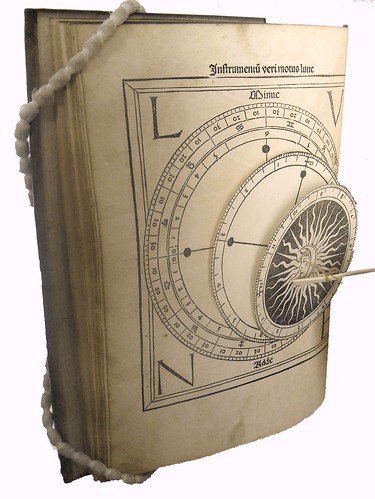Johannes Regiomontanus: Calendar
Johannes Regiomontanus: Calendar. With Sacro Bosco: Sphaera mundi; Alchabitius: Libellus isagogus; and Ibn Ezra: De luminaribus et diebus creticis
Venice: Erhard Ratdolt, 9 August 1482
Sp Coll BD7-f.13
The first item in this book is a calendar by the astronomer Regiomontanus (1436-1476). This edition is from the press of Erhard Ratdolt, a pioneer in the printing of scientific works. The fine black and red printing extends from the ornamental title page through to the calendrical tables and diagrams of eclipses. The tables show lunar and solar information for each day of the year, as well as church feasts and fasts. The Calendar also contains an instrument with volvelles, or paper wheels, which can be manipulated to show the motion of the moon.
Ratdolt also printed another astronomical work bound in here, comprising Sacro Bosco’s Sphaera mundi and other treatises. Sacro Bosco, or John of Holywood (d. c.1236), was a British astronomer working at the University of Paris. His Sphaera has been described by Owen Gingerich as “the longest lived scientific textbook”. Its exceptional popularity is attested by the hundreds of manuscript copies which survive, as well as the 160+ printed versions of it from the 15th, 16th and 17th Centuries.
There are two more texts in this volume, one Arabic and one Hebrew. Alchabitius’ Libellus Isagogus is a Latin translation of a 10th-century Arabic astrological work. The short astrological work which follows is by Abraham Ibn Ezra (or Avenezra), a Jewish scholar who lived in 13th-century Muslim Spain. The side-by-side appearance of astronomical and astrological texts here is a reminder of the ways in which the two disciplines could overlap and intertwine.

Image: an instrument with volvelles, or paper wheels, which can be manipulated to show the motion of the moon.
Go to the next book in the exhibition: Alfonso X, King of Castile and Leon: Tabulae Astronomicae





